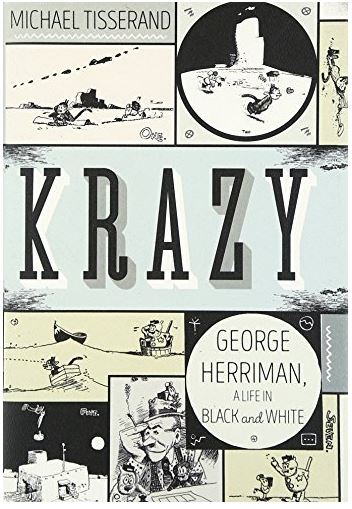Krazy: George Herriman, a Life in Black and White
by Michael Tisserand
An Amazon Best Book of December 2016: Krazy: A Life in Black and White is the exhaustively researched and fascinating story of a trailblazer with a secret. Nicknamed “The Greek” by a fellow cartoonist, owing to his swarthy complexion and curly hair (which he typically kept hidden under a fedora), it wasn’t until George Herriman, creator of the perpetually lovestruck Krazy Kat, had been dead for twenty-seven years that a would-be biographer discovered the secret Herriman had guarded all his life. He was the product of a mixed-race marriage, and had, like two generations of Herrimans before him, been able to “pass for white.” The creator of a comic strip that has been infinitely more influential among cartoonists and intellectuals than it was popular with the American public (the strips only appeared in newspapers for twenty years because newspaper magnate William Randolph Hearst was such a fan he gave Herriman a lifetime contract; a visitor to Herriman’s editor found an office junior sopping up a water leak with original Krazy Kat art), this new biography finally gives Herriman his due and frames him as a visionary whose influence helped shape popular culture for decades after his death. It takes a fresh and knowing look at the cheerfully subversive cartoons involving the put-upon but loving black cat and his white, brick-throwing love/nemesis. In addition, Tisserand provides eye-opening dimension with regard to the scale of Herriman’s influence: Michael Chabon, Will Eisner, Charles Schulz, ee cummings and many others credit him with inspiring their work (you may never look at the zigzag on Charlie Brown’s t-shirt again without remembering that it was Charles Schulz’s tribute to the Navaho designs that recurred in Herriman’s work). Ultimately, the reader comes away with a sobering idea of what an exhausting job it must have been for a gentle genius, living on the color line in the first half of twentieth century America, pursuing a career and a point of view that never would have been open to him had his true racial identity been known. —Vannessa Cronin, The Amazon Book Review

